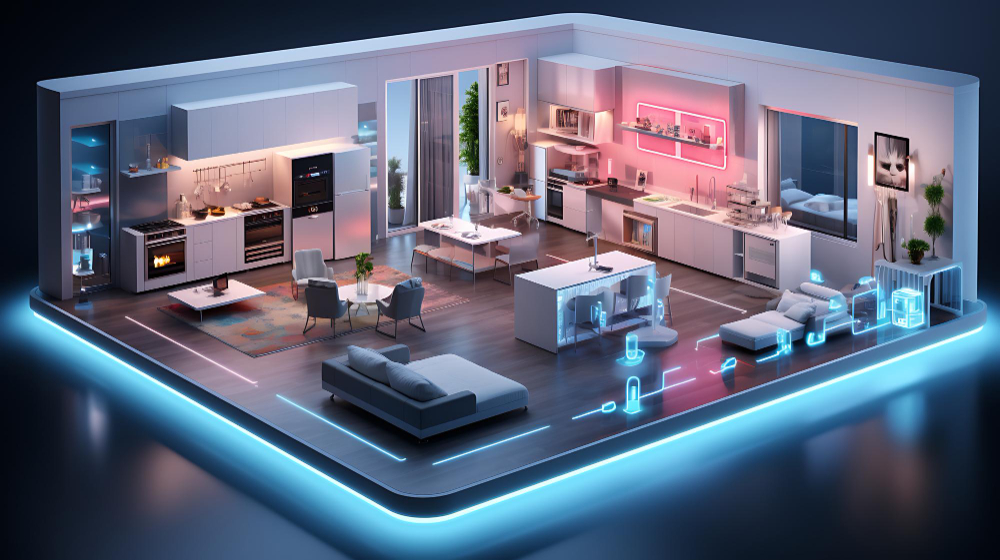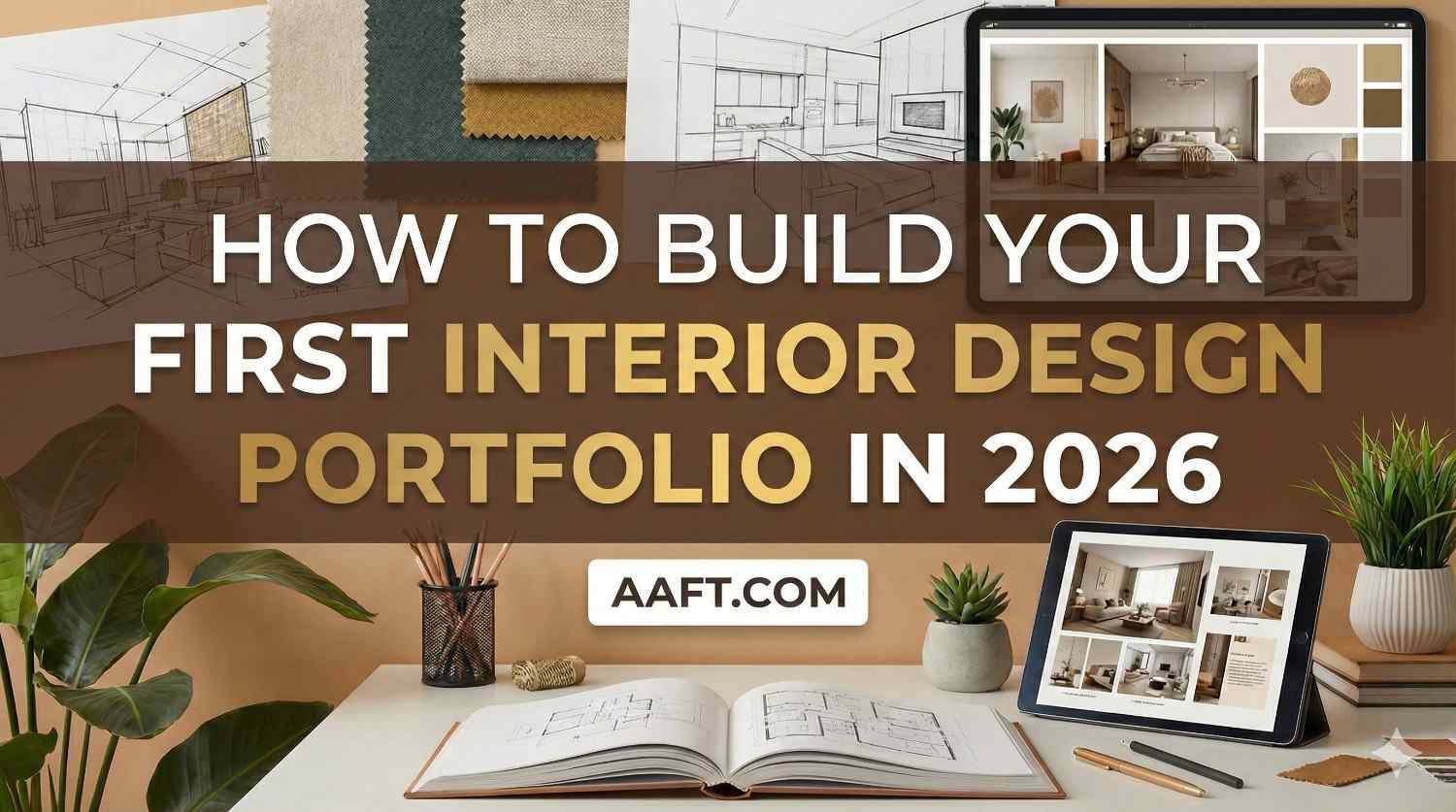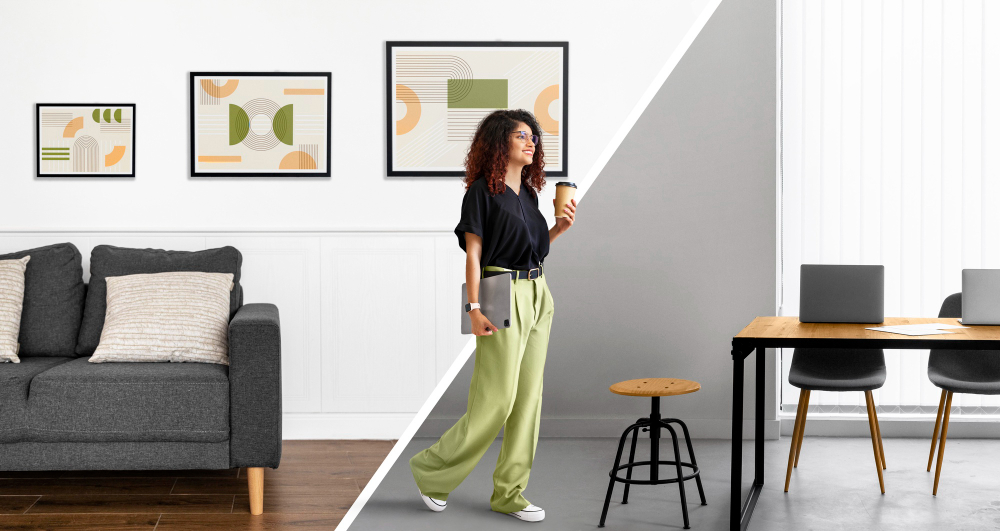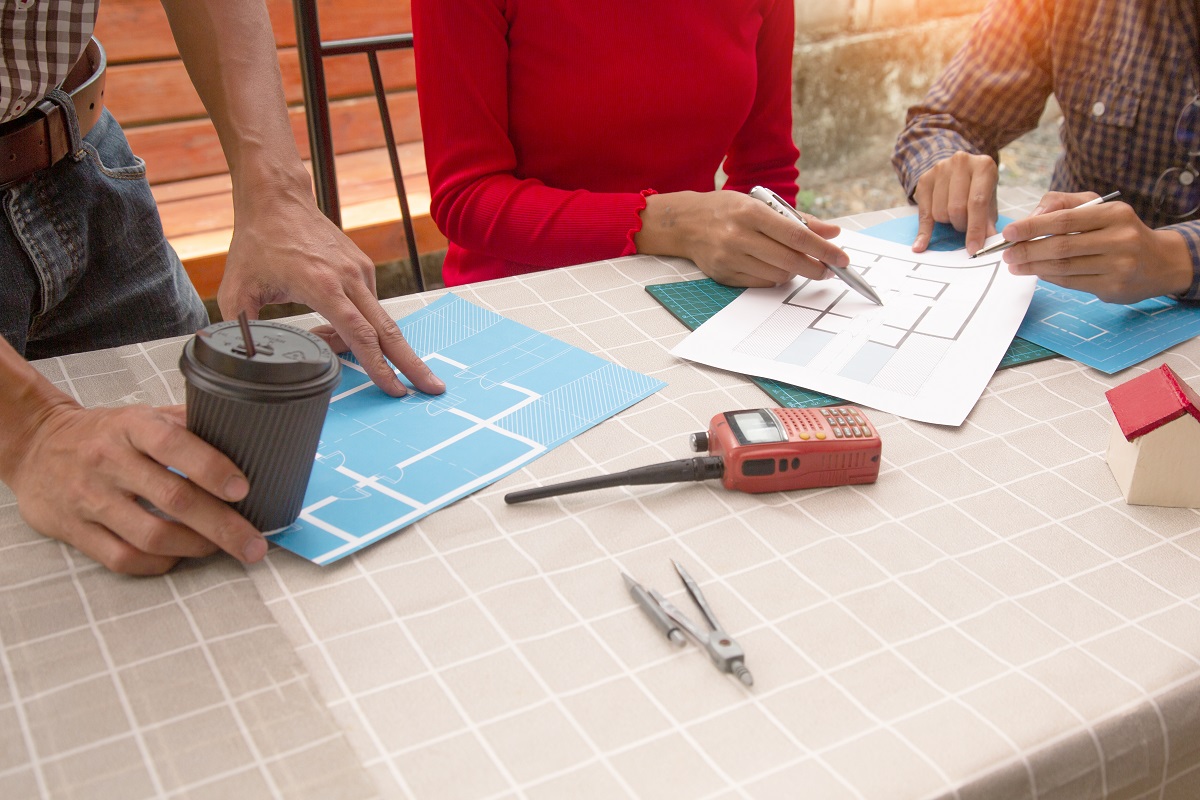Digital Interior Design: The Future of Styling & Courses
Imagine you have to design a luxurious living room, and you don’t feel like getting out of your home. Or, you need to show your prospective client a model of their dream home, but don’t want to do all the manual work of sketching and modeling. Well, this is very much possible with digital interior design.
Welcome to the era of digital interior designing, which is a perfect blend of creativity and cutting-edge technology. This balance is rewriting the rulebook of styling homes, offices and even high-stakes commercial space. Today, interior designing has evolved from traditional sketches to immersive digital experiences, offering you the ease of shaping and designing spaces where people live, work, and play.
In this article, we will be talking about how digitalization and the latest technologies are reshaping interior design. We’ll also talk about how digital interior design is a golden career prospect, what skills you will need, top courses, and more to set you on a path to success.
History of Interior Design
Do you want free career counseling?
Ignite Your Ambitions- Seize the Opportunity for a Free Career Counseling Session.
- 30+ Years in Education
- 250+ Faculties
- 30K+ Alumni Network
- 10th in World Ranking
- 1000+ Celebrity
- 120+ Countries Students Enrolled
For centuries, interior design has been an integral part of lifestyle. It’s not only about pretty spaces, but it’s a reflection of our society, culture, and technology throughout history.
Ancient Civilization: Talking about the ancient civilizations, the Egyptians used to decorate their tombs with rich murals and symbolic furnishings. Whereas Greeks and Romans prioritized symmetry, proportion, and luxurious materials. In addition, you can find elaborate carvings, paintings, and rich furnishings in ancient Indian designs.
Middle Ages to Renaissance: With time, the concept of interior design changed! During the Middle Ages, you can witness a huge dominance of function over form. Whereas, during the Renaissance period, interior designs were about grandeur, art, and ornate designs.
Book Now →
19th Century: Then came the 19th century, where you can find the impact of the industrial revolution in the interior design, with more stylish decor being accessible to the people.
20th Century: This is the time when modernism swept through the design philosophy, giving rise to clean lines, functionality, and minimalism.
Read Also: Top 10 Careers to Pursue with a Degree in Interior Design
Do you want free career counseling?
Ignite Your Ambitions- Seize the Opportunity for a Free Career Counseling Session.Early 2000s: This is the time when people got access to different cultures and societies, giving rise to a style that blended global influences with personal expression.
Today: And in this era, where digital advancement is at its peak, new digital tools are transforming interior design into a whole new experience, giving freedom to create, experiment, and explore different styles and designs.
The Designer’s Toolbox: Then and Now
As said, a lot has been changed over the years, ranging from designs to aesthetics, and much more. Even the tools that are used in Interior design have also changed. Let’s have a look at them:
Old-School Tools:
- Sketchbooks
- Blueprints
- Fabric samples
- Physical mood boards
- Site visits for measurements
Modern Digital Tools:
Today, a designer’s toolbox fits neatly onto a laptop or even a tablet, making it easier, faster, and infinitely more creative.
- CAD (Computer-Aided Design) software
- 3D rendering programs like SketchUp and Autodesk Revit
- Augmented Reality (AR) apps for virtual staging
- Virtual Reality (VR) walkthroughs
- AI-based color palette generators
- Smart measuring devices and laser scanners
How Modern Technology is Changing Interior Design?
Gone are the days when an interior designer would draw rough sketches in their notebook; today, interior designing is more about creating immersive, interactive experiences for the clients. And, we cannot deny the usefulness of the latest tools and technology that is reshaping this field. Let’s talk about some of the techs making all the differences in interior designing.
3D Visualization: through 3D visualization, clients can get a “walk-through” of their spaces virtually before a single brick is laid. This helps the clients get an idea of the design and the freedom to make changes they deem fit.
Remote Collaboration: Another advancement is the remote collaborations where designers get the freedom to work with clients across the globe in real-time via apps like Zoom, cloud-sharing, and more. This also leaves behind the hassle of visiting the sites to get an idea of what’s happening.
Customization at Scale: Now, clients can look and feel how a change would look like in a final design. Needless to say that AI tools allow more personalized recommendations and customized designs based on user preferences.
Virtual Reality (VR) Showrooms: today, when you go to a mall and end up liking a piece of sofa, you need not worry about how it would look into your living room. Virtual reality gives the choice to clients to test different furniture pieces, wallpapers, and even layouts without moving a single needle.
Sustainability Focus: With the latest AI tools and technologies, designers can not only create aesthetically pleasing spaces but also consider the environmental and social impact of their designs.
Why Is This Shift a Good Thing?
The digital transformation in interior design is a win-win for both designers and clients. Here are some reasons why we are saying this:
- Faster Turnaround: Projects that once took months to visualize now take days.
- Cost-Effective: Digital mock-ups prevent costly mistakes and save material wastage.
- Better Communication: Clients clearly understand what they’re getting, reducing dissatisfaction.
- Global Opportunities: Designers can freelance for international clients without ever stepping on a plane.
- Enhanced Creativity: More options, more combinations, and faster iterations foster bold, innovative designs.
Are There Any Drawbacks?
No innovation comes without its hurdles. And the same is the case with digital interior designing. Some challenges of digital interior design include:
- Mastering complex software can be intimidating for beginners.
- Software licenses, VR gear, and updated hardware can be expensive.
- Digital models can’t perfectly replicate the tactile experience of materials.
- Creativity could suffer if designers become too reliant on templates and presets.
- Not every client is tech-savvy enough to use virtual models or AR apps easily.
Courses You Can Enroll In to Pursue a Career in Digital Interior Design
By now, we understand that digital interior design is the future of modern architecture. However, are we ready to ride this exciting wave? There are several courses offered by prestigious institutes like AAFT that can help you equip yourself with the skills you need to become a digital interior designer. Some of the common courses include:
Diploma Programs
Diploma in Interior Design with CAD/3D Modelling & Diploma in Digital Interior Design
Duration: 6 months to 1 year
Focus: Basics of design, software skills, and material understanding
Bachelor’s Degrees
B.Sc. in Interior Design & B.Des in Interior & Spatial Design
Duration: 3-4 years
Focus: In-depth design principles, studio projects, internships
Read Also: Role of an Interior Designer: From Concept to Execution
Certificate Courses
Short-term Digital Interior Design Certificate Programs Focus: Specialized training in software like AutoCAD, SketchUp, Lumion, Revit, Photoshop
Online Courses
Other than the physical classes, several online platforms like Coursera, Udemy, and more offer flexible online options for working professionals.
How to Choose the Right Course?
As now you know about the courses, choosing the right course is also very important. The right course must align with your goals. Here are a few factors to consider when choosing the right digital interior design course:
Curriculum: Always make sure that the course you are choosing covers both design fundamentals and the latest tech tools.
Practical training: While theoretical training lays the foundation, practical training helps you build a castle. Therefore, while selecting the course, and institute, always check for studios, labs, projects, and internships.
Faculty: Faculty with industry experience can help you learn more with their experience, and provide insights into real-world scenarios, adding to your knowledge. Therefore, always prefer industry experience over academic knowledge while selecting the faculty.
Verify Accreditation: If you are looking to pursue a diploma or a degree in digital interior design, it is important to verify the accreditation of the course and the institute.
What Do These Courses Teach?
You might be thinking, what do these courses teach? Most credible digital interior design courses offer a balanced curriculum, including:
- Fundamentals of design (color theory, spatial planning, ergonomics)
- Material and textiles study
- Technical drawing and drafting
- CAD & 3D modeling software training
- Lighting and furniture design
- Virtual and augmented reality applications
- Project management and client communication
- Sustainability and eco-friendly designs
Read Also: Modern vs Contemporary Interior Design: What’s the Real Difference?
Essential Skills Required to Become a Digital Interior Designer
More than academic qualifications, digital interior designing requires a mix of creative and technical skills, like:
- Creativity and Artistic Vision
- Attention to Detail
- Strong Visualization and Spatial Awareness
- Tech Proficiency (CAD, 3D modeling, VR/AR tools)
- Communication Skills
- Problem-Solving Abilities
- Time Management and Organization
- Adaptability to Emerging Technologies
Why AAFT is Among the Best Schools for Digital Interior Design
The AAFT has carved a niche for itself in creative education, and its Interior Design programs are no exception. Here are some of the reasons that suggest that AAFT is the best institute for digital interior designing
Read Also: Top 10 Famous Interior Designers in the World
- AAFT offers a world-class curriculum that combines classical interior design training with cutting-edge digital techniques.
- You get access to the state-of-the-art labs that are equipped with the latest CAD, VR, and 3D printing tools.
- The faculty at AAFT includes industry leaders, designers, and architects as mentors.
- AAFT has tie-ups with several international design schools, exchange programs, and internship partnerships, which provide global exposure to the students.
- Students at AAFT get hands-on training through Live projects, studio internships, and real-world client interaction.
- AAFT provides strong placement support and access to top design firms and freelance networks post-graduation.
How do you get admission into AAFT for interior design?
No doubt that AAFT is one of the best institutes for digital interior designing, yet the process to apply for the courses is pretty simple. Here’s the step-by-step process:
Application Form: Fill out the form available on AAFT’s official website.
Submit Portfolio: (Optional but recommended) Share a portfolio of your sketches or creative works.
Entrance Exam: Aptitude test assessing creativity, design understanding, and visualization skills.
Personal Interview: A casual yet crucial discussion to assess passion and commitment.
Admission Offer: Based on overall performance.
Pro Tip: Start building a portfolio early—even basic sketches or design ideas can show your potential!
Conclusion
The future of interior design is no longer confined to hand-drawn sketches and physical models—it’s a dynamic, digital playground where imagination knows no bounds. Technology has opened up new possibilities for creativity, precision, and client engagement, turning ideas into immersive experiences at the click of a button.
Read Also: Vaastu-Friendly Interior Design Principles
For aspiring designers, this digital evolution is an opportunity to innovate, to dream bigger, and to build smarter.
Institutes like AAFT are at the forefront of this transformation, offering cutting-edge courses that blend timeless design principles with the latest technologies. If you’re passionate about styling spaces and want to be part of the next wave of creative pioneers, now is the time to take the first step.

AAFT has been providing the world with limitless creativity and expression since 1993! Through a dynamic and industry-driven curriculum, AAFT provides engaging and captivating articles to persuasive blogs and empowers its readers to explore diverse avenues of creative media education-related content.






